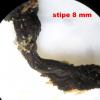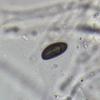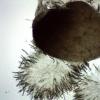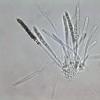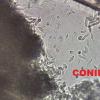
18-12-2025 17:23
 Bruno Coué
Bruno Coué
Bonjour,je serais heureux d'avoir votre avis sur c

18-12-2025 21:17
Pol DebaenstThe identification took me to Byssonectria deformi

18-12-2025 18:07
Margot en Geert VullingsThese plumes were found on rotten wood.They strong

17-12-2025 18:35
 Michel Hairaud
Michel Hairaud
Bonjour à tous/Hi to everyone I am passing along

15-12-2025 15:48
 Danny Newman
Danny Newman
Melanospora cf. lagenaria on old, rotting, fallen

15-12-2025 15:54
 Johan Boonefaes
Johan Boonefaes
Unknown anamorph found on the ground in coastal sa

15-12-2025 21:11
 Hardware Tony
Hardware Tony
Small clavate hairs, negative croziers and IKI bb

15-12-2025 07:09
 Danny Newman
Danny Newman
indet. Rutstroemiaceae sp. on unk. fallen leavesMc
Found on a fallen branch of oak. The wood is colored black and the stromata has a stipe of 8x1 mm and a fertile part of 11x2.5 mm. The outer crust is hard and black with grey patches and lumpy as a result of the underlying perithecia.
TELEMORPHE:
Perithecia: subglobose 514 x 400 µm
Asci: cylindrical 124-158 x 8-9,65 µm
Paraphyses: filiform
Spores: 11,35-13,37 x 5,14-5,94 µm Q= 2.23 with straight germsplit (spore lenght 11.2 µm with germsplit length 7.85 µm)
ANAMORPHE: flat length 5-8 mm; conidia:10,41-16,3 x 3,02-3,86 µm
Macroscopic/microscopic this frb looks like Xylaria arbusula except the length of the asci is wrong and I found it in Belgium/Turnhout in winter! Is this not a tropical asco?
I will be grateful for your help!
Greetings,
François Bartholomeeusen

your images do not allow an identification.
Before considering X. arbuscula you should rule out X. hypoxylon. The key feature distinguish them is the thickness and texture of the outer crust. See my notes in the monographic keys available on Ascofrance.
Good luck,
Jacques
I have made the wrong choice at step 2 of your superb key. I chose "Stromata hard-textured with a carbonaceous outer crust".
Perhaps the persistent, drying east wind, the sun and the freezing temperature changed the texture a bit? In all cases reading your notes has shed light on my problems. I have also measured the out crust and is was about 40-45 µm thick.
Thank you for your quick reaction!
Cordial greetings,
François



